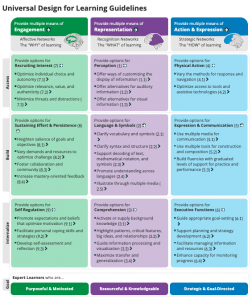In my first post, I wrote about the goal of taking more time to review and synthesize what I have learned. Since March 13 when my focus turned towards supporting schooling from home, I have read articles and blogs, watched webinars, discussed with colleagues, and read books to find the best ideas. I’ve learned from listening to students and families. And I’ve been most intrigued with the idea of rethinking a better way of doing education in the fall. I know a huge system change is needed in order to a) move the education system into the 21st century and b) address systemic oppression and c) eliminate barriers in order to enable and empower all students, especially the students whose needs have not been served historically. What follows are some of the biggest themes I’m seeing. I’m using a list for my synthesis process and hope to dig in deeper to some of these topics in future posts. This is not meant to be a checklist.
- Build trusting, caring relationships by connecting with students and learning about their dreams, passions, funds of knowledge, and interests. Talk about students with strengths-based language and build off their strengths during instruction. Acknowledge the genius in every student.
- Honor the power of story, as an instructional tool and to build relationships.
- Hold a deep belief that all students can be successful and bring assets to the classroom.
- Develop respecting relationships and partnerships with families, a student’s best and first teachers.
- Attend to emotion and find out what students and families need. Show empathy.
- Listen to understand.
- Nurture a community of learners and develop communication expectations. Honor language and multilingualism.
- Model, discuss, learn, practice and grow collaboration skills. Discuss collectivism and how we are better and produce richer products when we work effectively in diverse groups.
- Focus on 21st-century skills, inquiry, and problem finding.
- Build cognitive capacity and academic mindset, by modeling how to analyze and learn from mistakes and face challenges. Support students to become independent learners who understand their identities deeply.
“A warm demander holds high standards and offers emotional support and instructional scaffolding.”
–Hammond
- Students see themselves in the curriculum. They have mirrors to their own experiences and windows into others’ experiences. Create student-driven, evidence informed learning experiences. Consider purpose, audience, and action/change so that students see themselves as politically empowered.
“With a learner-driven, evidence-informed practice…
goals are relevant to our learners’ success
now and in their future.”
–Couros and Novak
- Leverage integrated/thematic learning experiences. Heighten the importance of Social Studies, especially inquiry. Take into account the community and sociopolitical context (both present and historical).
- Criticality is a focus: Engage students in thinking about power, equity, and anti-oppression in the text, in society, and in the world.
“When youth have criticality, they are able to see, name, and interrogate social transformation. Thus, students need spaces to name and critique injustice and ultimately have the agency to build a better world for all.”
– Muhammad
- Inquire about and uncover hidden rules for how we do things (such as text structure, power structures, etc.).
- Celebrate and build on word knowledge in context. Incorporate non-fiction, primary, song, and a variety of text types from a variety of cultures.
“I constantly ask myself, out of all of the texts in the world,
why do I want to put this text in front of my students?”
-Tatum
- Push back on dominant narratives that are erroneous (especially about people of color). Point out or ask questions about stereotypes and generalizations.
- Lessons are Universally Designed. They have clear, meaningful goals so students’ brains know what to pay attention to. The teacher plans with intention for what to explicitly teach and scaffold. Students have choice through flexible means of accessing information and sharing what they have learned. Barriers are addressed and threats are minimized. Threats can include beliefs, micro-aggressions, and racist ideas.

- Give specific feedback and time for students to act on the feedback to improve their work.
- Design lessons based on Culturally Relevant Practices (Hammond):
-
- Anchor and ignite by starting with a provocation, a hook, or a thought provoking question.
- Build on funds of knowledge and build/utilize background knowledge. Understand that background knowledge is culturally grounded. Hook new learning to old so that learning will stick. Give students unstructured time first, then they can use a cognitive routine. Use cognitive routines over time so they become a permanent part of students’ processes.
- Chew the information by making, doing, and/or designing something.
- Review 12-24 hours later by practice and application.
- Assessment is based on the goal. Students have a variety of choices to demonstrate learning, receive meaningful feedback, and have opportunities to act on the feedback.
- Students reflect on content, process, and collaboration.
These are the very least of what we can do. I know there is so much more, when we think of systematic change. But for me, the ideas above are a baseline, the non-negotiables for my own practice.
Sources
Cultivating Genius, Muhammad
Culturally Responsive Teaching and the Brain, Hammond
Innovate Inside the Box, Couros and Novak
Mirrors, Windows, and Sliding Glass Doors